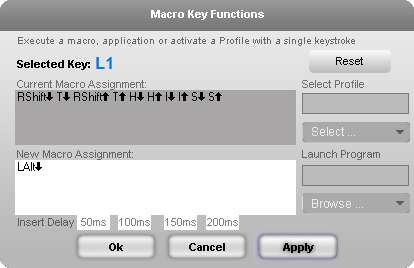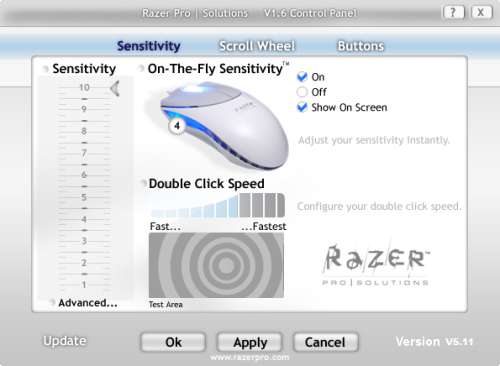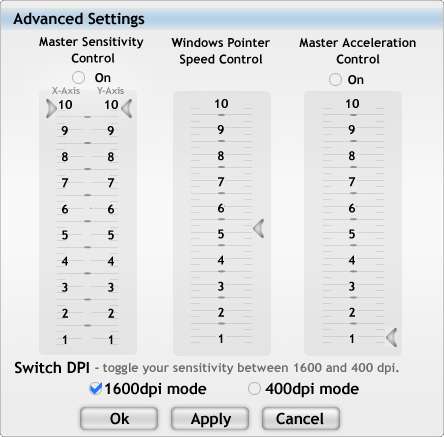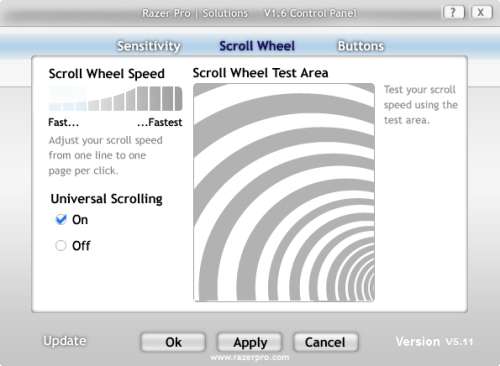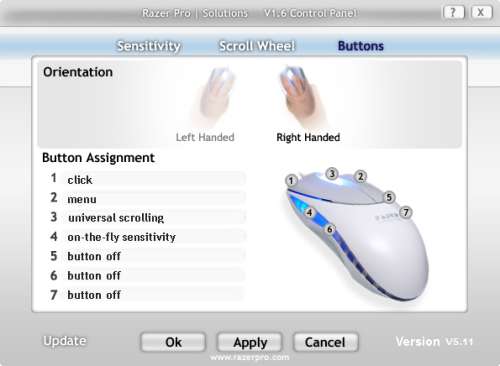- Qualcomm Launches Snapdragon 4 Gen 2 Mobile Platform
- AMD Launches Ryzen PRO 7000 Series Mobile & Desktop Platform
- Intel Launches Sleek Single-Slot Arc Pro A60 Workstation Graphics Card
- NVIDIA Announces Latest Ada Lovelace Additions: GeForce RTX 4060 Ti & RTX 4060
- Maxon Redshift With AMD Radeon GPU Rendering Support Now Available
Razer Pro Solutions Pro|Click v1.6 and Pro|Type
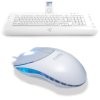
You know that Razer makes great gaming peripherals, but did you know they also produce products suited for the professional and stylish type? Today we are taking a look at their Pro|Click mouse and Pro|Type keyboard which both look great and function well.
Page 5 – Drivers
Both the Pro|Click and Pro|Type include their own highly-tweakable software drivers. Each product comes with its own individual software disc hidden in the back of its instruction booklet, and the install processes are streamlined and quick. Here’s a look at the extent of the tweaks you can carry out through each device’s control panel.
The main panel of the Pro|Type keyboard’s control panel provides access to all the available options for the Pro|Type keyboard. Drop-down lists at the top of the control panel allow you to select your image editor or music player. The selection you make in each of these menus will affect the way the rotate/zoom and music control buttons function.
These menus contain several popular options like Windows Picture Viewer, Photoshop, and ACDSee for the Imaging Options menu, and Windows Media Player, iTunes, and Winamp. However, I couldn’t get the ‘Shuffle’ button on my keyboard to activate the shuffle function in either iTunes or Windows Media Player 11 (the version that comes with Windows Vista).
The main panel also allows you to rename profiles and select the active profile, and you can also opt to have the new active profile momentarily displayed in the bottom corner of the screen when you switch profiles.
Clicking on any of the blue-illuminated Macro keys in the control panel allows you to set or change that key’s macro for the selected profile. After the dialog box is displayed, begin entering the keystrokes that you would like to perform. The software stores the key-down and key-up events, allowing simultaneous key-presses to be automated. Once the appropriate macro has been entered, simply click “Apply†to store the combination of keystrokes that have been entered. Macro key presses can also activate profiles or start programs.
The control panel for the Pro|Click v1.6 mouse is simply called “Razer Pro Solutions Configâ€, and it offers a wealth of options for fine-tuning the performance of the Pro|Click. This control panel contains three separate sub-panels, for adjusting sensitivity, scroll wheel performance, and button functions. The first panel contains sensitivity tweaks and adjustment for the double-click speed, as well as options for on-the-fly sensitivity switching.
Here’s where the tweakability comes into play – clicking on the “Advanced†button in the “Sensitivity†panel brings up the Advanced Settings dialog. You can control sensitivity individually in either the X or the Y direction, and there’s even a dedicated slider for acceleration control. This can be helpful if you need to do a combination of detail work and long-distance mousing, though my personal preference is still a linear response character. The speed of the Windows pointer can also be controlled independently in this dialog box.
Back within the main window, the Scroll Wheel panel provides options for changing the incrementation of the scroll wheel, as well as a fun area for testing the speed of the wheel. You’ll also notice that the continuum of the scale for scrolling speed adjustment ranges from ‘Fast’ to ‘Fastest’. Sure enough, the Double-Click Speed slider in the last panel is labeled the same way. I suppose if you truly wanted ‘slower’ performance, you’d buy a different mouse.
The ‘Buttons’ panel allows you to switch between right-handed and left-handed operation. Southpaws will be glad to see that Razer has made provisions for their particular preference. After all, left-handedness isn’t any less ‘right’ than right-handedness – it’s just more… left. To re-assign a button’s function, simply click on the button assignment, and select your desired function from the drop-down menu that appears.
Next, we’ll examine what it’s like to use these peripherals.
|
|
Support our efforts! With ad revenue at an all-time low for written websites, we're relying more than ever on reader support to help us continue putting so much effort into this type of content. You can support us by becoming a Patron, or by using our Amazon shopping affiliate links listed through our articles. Thanks for your support!





